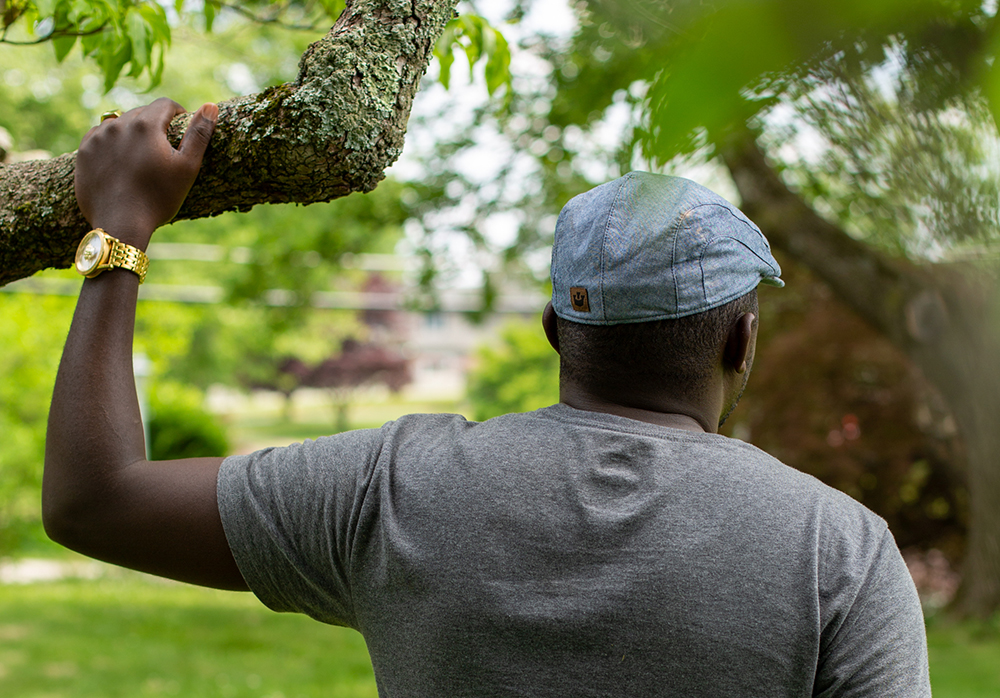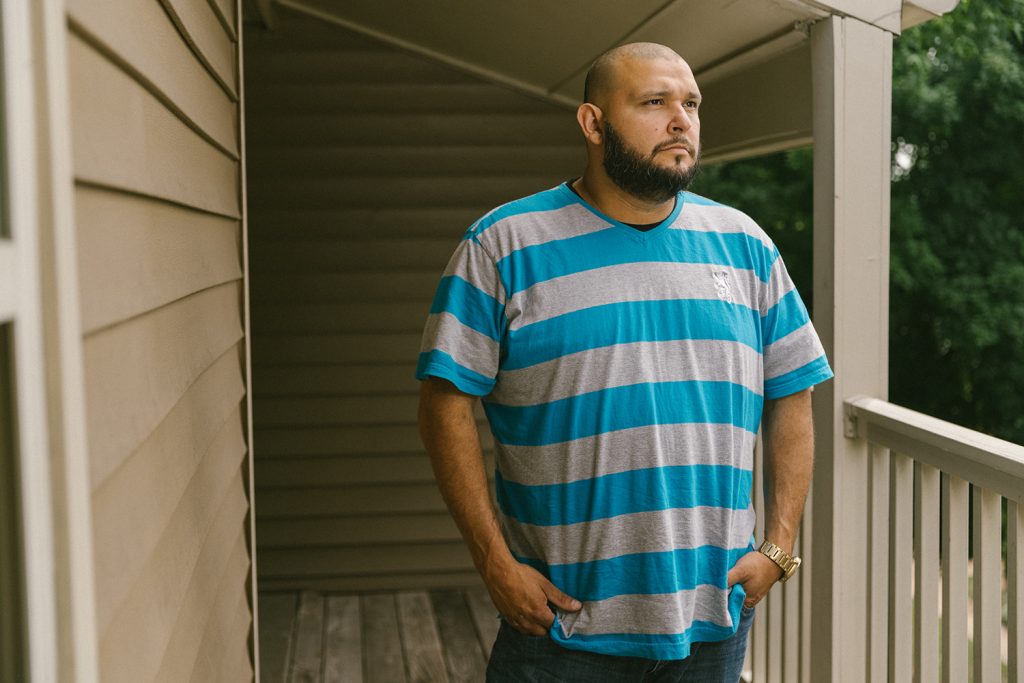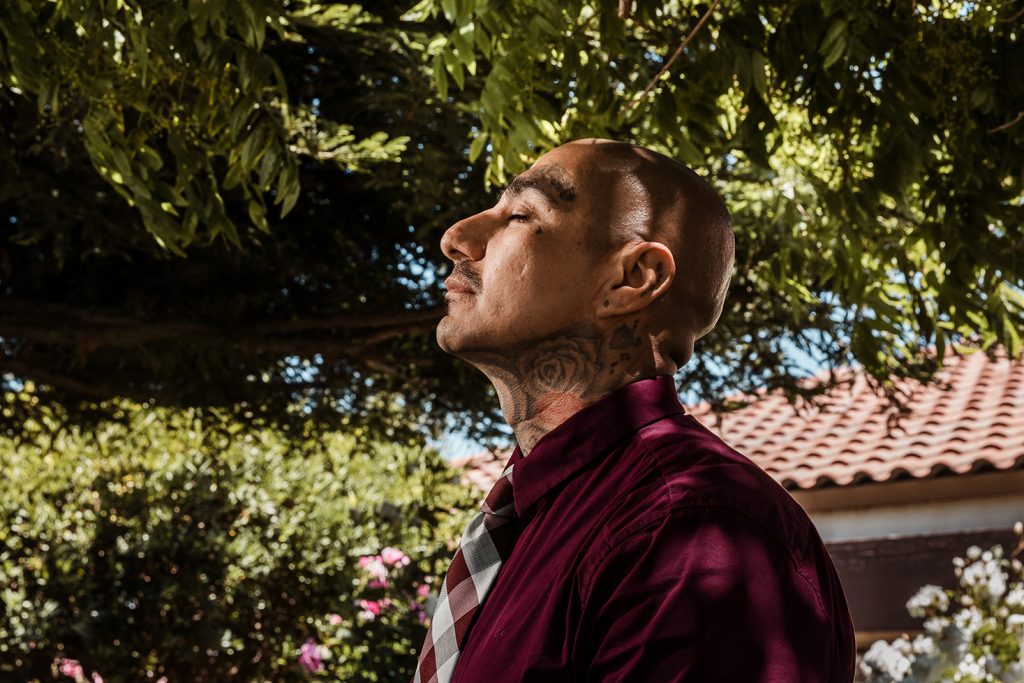Each day, the United States government unnecessarily locks up thousands of people, including children, in civil immigration detention in more than two hundred immigration detention centers around the country.
People may be detained for many months – even years – as they await final adjudication of their cases or deportation.
Trapped in a system marked by mistreatment and abuse, medical neglect, and the denial of due process, hundreds of people in immigration detention engage in hunger strikes as a means of protest each year.
Immigration and Customs Enforcement’s (ICE) failure to provide safe and humane conditions in detention during the COVID-19 pandemic has only raised the stakes for detained people. Although some detained people, on occasion, are able to bring outside attention to their hunger strikes, very little is known of ICE’s systemic response to hunger striking detainees.
In June 2021, Physicians for Human Rights (PHR) and the American Civil Liberties Union (ACLU) jointly released Behind Closed Doors: Abuse and Retaliation Against Hunger Strikers in U.S. Immigration Detention, the first in-depth, nationwide examination of what happens to people who engage in hunger strikes while detained by ICE.
Here are some of their stories.
-
John Otieno
ICE facility, Louisiana
“Those who go on hunger strike are trying to just resist an unjust system. […] They choose hunger strikes because the injustice is too much … Hunger strikes are not a choice any man or woman wants to make. [They are] the last option for people who have faced so much injustice turned law, that resistance and civil disobedience becomes their duty.”
“John Otieno”* worked in law and politics at home in East Africa. He survived a terrorist attack, including a gunshot injury, while helping the daughter of an American diplomat run for cover in a safe room. Mr. Otieno survived but decided to seek asylum in the United States. When he arrived, he was transferred to a detention center in Louisiana while awaiting a decision on his application for asylum.
Mr. Otieno soon realized there was very little chance to be released from detention. He learned that ICE’s local field office was notorious for denying parole, a form of release for asylum seekers. Because of Mr. Otieno’s legal background, other detained people asked him to lead negotiations with ICE officers for better conditions and for parole, but those discussions went nowhere. As Mr. Otieno recalls, when the commanding officer for ICE came to address their complaints, he quoted sections of the law that did not exist or were not applicable. Another officer told the detainees that the officers did not owe them answers, that they could hold them until they deported them, and that they were trained to deport as many of them as possible.

Deprived of other options, 29 detained people at the facility went on a hunger strike during the COVID-19 pandemic in the summer of 2020. The strike lasted 12 days. Mr. Otieno was put into segregation. ICE officers placed him in a freezing cold room and deprived him of his personal property – even books. “[Y]ou have absolutely nothing to do all day except look at the wall,” he said. “And every 15 minutes, an officer passes with some sort of electric metal and beats on your door so that you can’t sleep, because you can hear your door and also the adjacent doors.”
Fortunately, two detained people in the group were granted asylum. However, Mr. Otieno faced retaliation. He was transferred three other times and branded as a troublemaker. Upon his transfer to another Louisiana facility, the warden came by his dorm. “If you make trouble here,” he recalls the warden saying, “I have my gun and I will use it.”
“They put me on a bed and handcuffed me to an emergency medical stretcher,” he said. “[They] strap you on the chest, waist, legs, [with] hard restraints … there is no point in fighting back because you are there with six male, strong officers, and three nurses, and there is nothing you can do.”
Mr. Otieno has since been released from detention. However, he has lost significant weight – 28 pounds – and now takes medications for post-traumatic stress disorder and depression. Of the ordeal, he said, “It’s an experience that I wouldn’t wish on my worst enemy.” Although Mr. Otieno came to the United States seeking safety, he was greeted with violence. Seeing how the country treats “people who are fleeing for their life… makes me question where these morals, principles, democracy, rule of law, that is spoken of?” he asked. No one wants to hunger strike, he said, but they do so out of a lack of options.
“Those who go on hunger strike are trying to just resist an unjust system. They choose hunger strikes because the injustice is too much … Hunger strikes are not a choice any man or woman wants to make. [They are] the last option for people who have faced so much injustice turned law, that resistance and civil disobedience becomes their duty.”
*Consented to publishing his story under a pseudonym.
-
Nilson Barahona-Marriaga
Irwin County Detention Center, Georgia
“We knew at the moment the virus started spreading in detention it was going to be uncontrollable.”
Nilson Barahona-Marriaga, 39, immigrated to the United States from Honduras more than two decades ago, when he was a teenager. He has a U.S. citizen wife and young son. Yet in the fall of 2019, he was detained by ICE at the Irwin County Detention Center in Georgia.
When the COVID-19 pandemic began, the only information detained people at Irwin had about the crisis came from the media. “We knew at the moment the virus started spreading in detention it was going to be uncontrollable,” Mr. Barahona-Marriaga said. He began to discuss a hunger strike with others in his unit. He recognized that his hypertension and diabetes made him medically vulnerable to the virus. His group began refusing meals, and, after three days, a supervisor came to meet with them. The group told the supervisor they wanted everyone who was medically vulnerable to be released and for ICE to start following public health guidelines and adopt better cleaning practices. Facility staff failed to follow guidelines to protect detained people from COVID-19, including proper disinfection and mask-wearing, he said.
“I was working in the kitchen,” Mr. Barahona-Marriaga said. “We were the ones that were doing the laundry, kitchen, cleaning. We knew they weren’t doing what they were supposed to do.”

Three days later, facility staff removed Mr. Barahona-Marriaga and six other people from the unit, put them in solitary confinement, and cut off the water. Detained people could not wash their hands or even flush the toilet. Mr. Barahona-Marriaga said this experience was also “psychologically challenging” because ICE took away phone privileges, restricting his communications with his lawyer and his family. “Not being able to talk to my mom when I know that she is aware of me being on a hunger strike and not being able to tell her that I was okay was very difficult.”
Around that time, a case manager at the facility, who was an older woman, approached the group. She asked why they were undertaking the strike. Mr. Barahona-Marriaga said they replied, “Ma’am, we are not doing this just for us. We are doing this for you, too.” She told them that there were no people at Irwin with the coronavirus. Mr. Barahona-Marriaga showed her his copy of a court declaration from a warden that there were already COVID-19 cases at the facility. She was shocked. Mr. Barahona-Marriaga realized that ICE had been lying to everyone at the facility, not only to detained people.
Mr. Barahona-Marriaga said this experience was also “psychologically challenging” because ICE took away phone privileges, restricting his communications with his lawyer and his family.
That afternoon, when CNN published a report on the hunger strike – including an interview with Mr. Barahona-Marriaga – other detained people saw it as a victory and told Mr. Barahona-Marriaga they could end the strike. Most people quit the hunger strike, but Mr. Barahona-Marriaga and a Cuban man kept going.
Around the ninth day that he was in the medical department, the head nurse came to Mr. Barahona-Marriaga and urged him to quit his hunger strike so he could return to his unit. He noticed that the nurses entering the room beside his were fully covered from head to toe. Someone in the room next to him had the virus. That day, he ended his strike.
At first, ICE had denied in court that Mr. Barahona-Marriaga was medically vulnerable to COVID-19. Then ICE said they were not going to release him because he was a threat to society. Finally, in November 2020, his name was called. He was told he was going home, without any explanation.
One month out of detention, Mr. Barahona-Marriaga said he was still emotionally processing the fact that he was released. “It feels good to be outside,” he said. “But at the same time … I feel like part of me is still back there … Because I can’t stop thinking about the people who fought with me, who worked with me, when we were doing the strike, and most of them are still detained.”
-
Joe Mejia
Yuba County Jail, California
“No one wants to starve, to feel their intestines move inside their body because of hunger. … The housing, conditions, clothing, food, hygiene—they try to make individuals in ICE detention miserable. They are using immigration detention as a form of punishment for immigrants.”
Joe Mejia, age 38, was born in Mexico to parents from El Salvador. A legal permanent resident since 2006, he has lived in the United States since the age of four. When he applied for relief under the Convention Against Torture, he was detained by ICE for 34 months, first at Rio Cosumnes Correctional Center in California, then Mesa Verde ICE Processing Facility, and finally Yuba County Jail.
Before the pandemic, Mr. Mejia and fellow detained people had already been planning a hunger strike at Yuba County Jail because of poor conditions. COVID-19 gave them another reason to strike. ICE did not give them anything to protect themselves from the virus.
“There was no other relief, our last option was to hunger strike,” Mr. Mejia said. They wrote a demand letter and gave it to officers on the first day. About 150 people at Yuba County and Mesa Verde participated in the hunger strike, which began on July 23 and lasted for five days.

Facility staff responded by removing all food from the hunger strikers’ cells. They destroyed personal property. They took down family photos. They turned off their phones, so that they could not contact family or lawyers. They refused to turn on the television so they would not be able to watch the news. They prolonged the time they were confined to their cells. They did not give them clean laundry. They denied them hygiene supplies from the commissary. Some hunger strikers stopped receiving mail.
“There was no other relief, our last option was to hunger strike.”
Joe Mejia
The facility’s tactics became more aggressive. They pepper-sprayed some of the other pods who were peacefully protesting. They put some of the hunger strikers in bare concrete rooms (solitary) and told them that they needed to eat again. Mr. Mejia also saw some officers enter cells where the detainees were hunger striking, and although the hunger strikers complied and put their hands behind their backs, the guards beat them.
On the second or third day, hunger strikers’ temperatures and blood pressure were taken. It was not until the fourth or fifth day that the facility pulled them all out, took their weights, and asked if they were feeling suicidal. The doctors did not say anything about how the hunger strike would affect their health. One nurse sometimes acted as interpreter. At other times, there were no interpreters.
Facility staff responded by removing all food from the hunger strikers’ cells. They destroyed personal property. They took down family photos. They turned off their phones, so that they could not contact family or lawyers.
Once a lot of men started feeling physically ill, they ended the strike. ICE had not met any of their demands. Mr. Mejia wanted to keep striking, but he was afraid of the retaliation he would face if he did it alone.
The day he ended his hunger strike, Mr. Mejia was informed that he would be released. ICE should have prevented the circumstances that led to the hunger strike, he said. A hunger strike is a last resort. “No one wants to starve, to feel their intestines move inside their body because of hunger.… The housing, conditions, clothing, food, hygiene – they try to make individuals in ICE detention miserable,” he said. “We are not guaranteed legal representation.” Conditions in ICE detention were worse than what he experienced in prison, Mr. Mejia said. “They are using immigration detention as a form of punishment for immigrants.”
“This is a disgrace,” he said. “These are human lives.”
